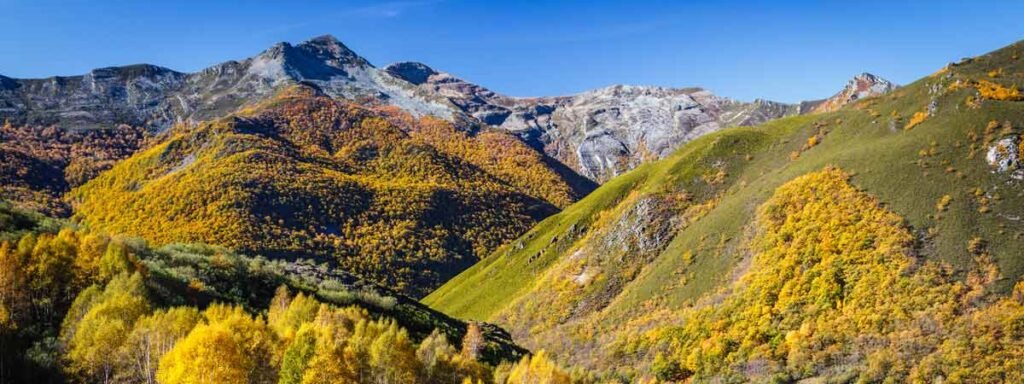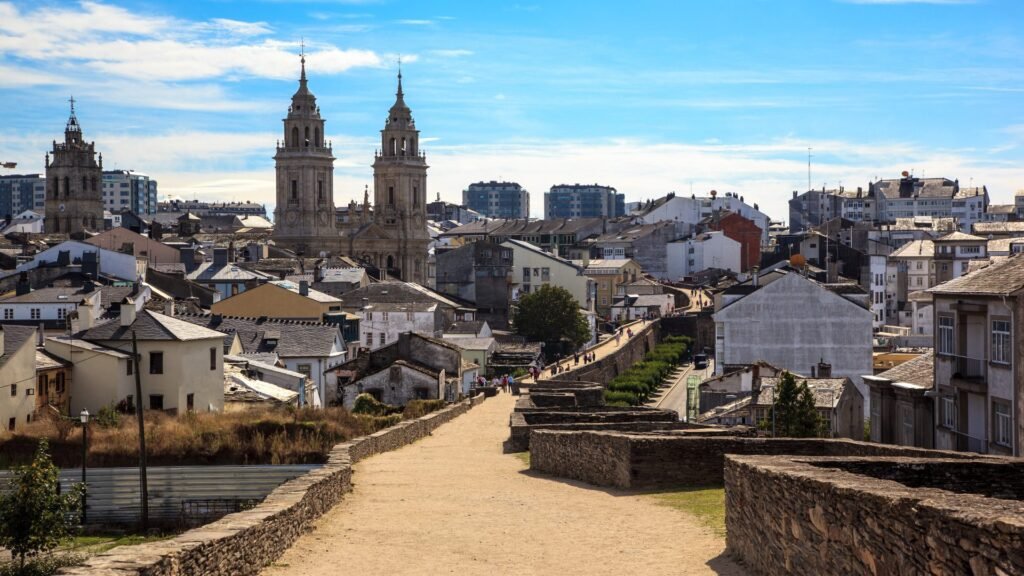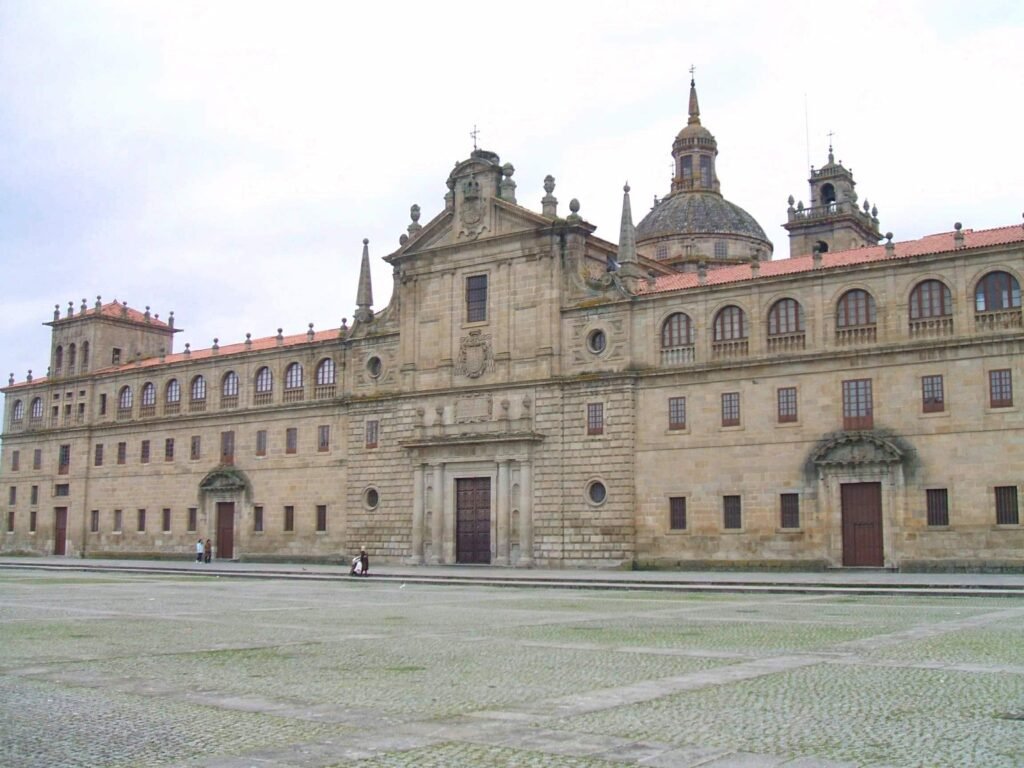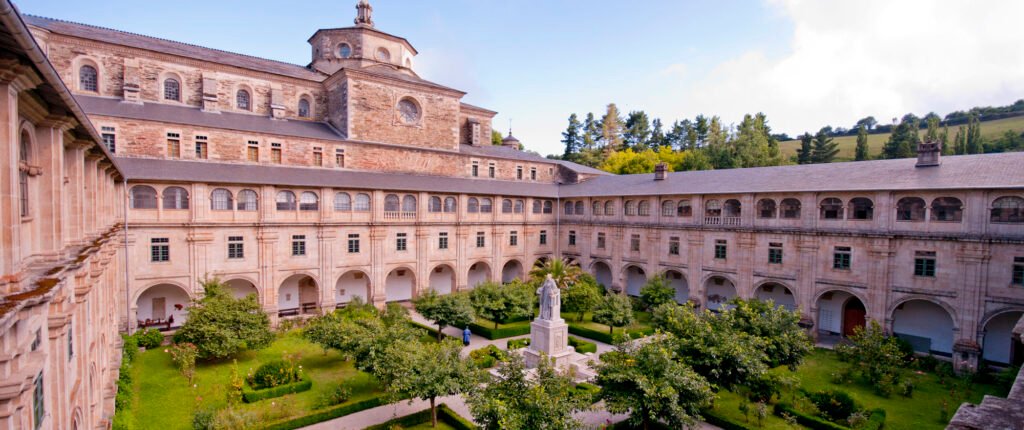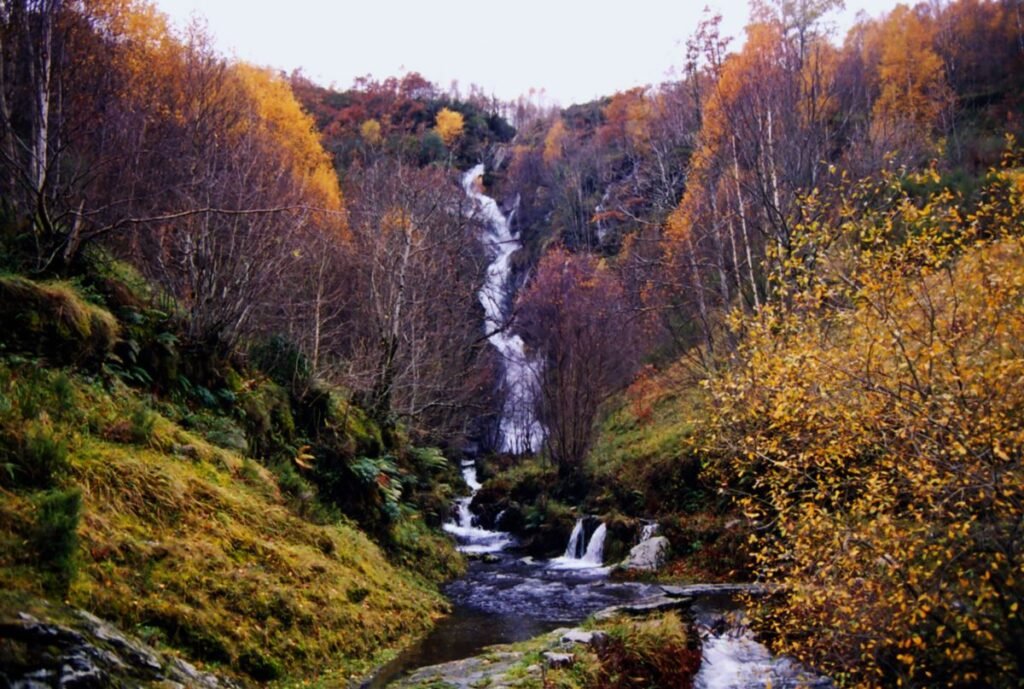Our Surroundings
nature and rest
We are located in a rural area, calm and surrounded by nature in St James' Way (French Way). We offer everything you need for a memorable stay.
We'll show you some of the most important places in our surroundings. Ask us during your stay and we will inform you.
St James' Way
A route that crosses EUROPE destination St James' Way
St James' Way has been, and continues being, without a doubt, the most ancient route, busiest and most celebrated in the ancient continent. Both travellers and walkers have found Santiago a very attractive city. Moreover, it has created a route, it has made a Way. You can go to Santiago and Galicia many ways. However, the best way to come is by doing St James' Way.
St James' Way
Portomarín
Portomarín was built next to the Roman bridge located over the Miño river (rebuilt during the Middle Age) . This beautiful village is right in St James' Way. May 18th 1212, St John's Order gave the government a municipal code of law and administration for its town.
When in 1962 the Belesar reservoir was built, the town was moved to its neighbour town Monte do Cristo. There, some of the most important buildings, civil and religious, were rebuilt, ; specially St Nicholas' Church, with a romanic style built by St John from Jerusalem Hospitable Order, whose stones were numbered and assembled once again in their actual placement.
When the swamp's water level goes down, you can still see the remains of the ancient buildings, the pier and the primitive bridge.
Although known for its landscape, Portomarín also has a great firewater, which has received a great number of awards. It is tradition that during the Easter holidays, the firewater is made right in this town, in the square that is in front of the church, during the "Firewater Celebration".
Portomarín
Triacastela
Triacastela is located in St James' Way, in between O Cebreiro and Sarria, in Lugo.
Triacastela's origin is related undoubtedly to St James' Way. The three main paths are interconnected by the tight streets known as vielas.
In the middle of the 19th century, it was called Triancastelaen, in many privileges stated with the name of "Triacastelle" or "Triacastelle Nova". In other documents, such as the oldest pilgrims guide, the "Códice Calixtino" is written as "Triacastellus". Many kings and members of the nobility were linked to the village. The biggest benefactor was King Alfonso IX (1188-1230), who is believed to having spent some time there.
Triacastela
Santiago de Compostela
Named World's Heritage Site since 1985, Santiago de Compostela has attracted travellers and pilgrims from all around the world for centuries.
In the historical district, the Cathedral and the Portico of Glory can be found. There are also symbolic squares, such as Obradoiro's, Quintana and O Toural. Multitude of churches, convents and palaces can be seen in this beautiful city. Romance, gothic and baroque are some of the traditions that have lived on over the years.
There are also shops, bars, restaurants and a beautiful Abastos Market where you can find fresh products. Moreover, in the town's center, there's the Alameda where camellia trees can be seen, and the Paseo de la Herradura, with perfect views to the Cathedral. Bordering the Sar river, there's "la Colexiata de Santa Maria" and its steep columns.
Whoever visits Santiago, cannot miss the opportunity to go up to the Cathedral's covers. The visit to the roofs of the temple was already a recommended activity in the Códex Calixtinus to be able to appreciate its splendid beauty.
Santiago de Compostela
Lugo
From Roman origins, Lugo was founded in the 25 a.C. by Paulo Fabio Máximo and it's Galicia's most ancient city. Built in the vicinity of a fort, Lugo was baptised with the name of Lucus Augusti during the roman age. A great number of Roman remains, many of them kept in the Museo Provincial, are testimony of Lugo's first years of history, specially its roman wall, the only one in the world, that keeps the entirety of its perimeter and that was named World's Heritage Site in the 2000.
Lugo's celebrations, St Froilán's Celebrations, are ones of the most crowded of Galicia and they last almost the whole first fortnight of October.
Lugo's splendid Roman past can be seen from the Wall that circles the city, which is World's Heritage Site. Of its Roman past are also witness the Termas and the Roman Bridge. A visit to the Cathedral is almost mandatory, as well as one to the Virgen de los Ojos Grandes, a beautiful polychromatic stone sculpture from the medieval age. Finally, to recharge your batteries, you can get a tapa and mencía wine in the busy taverns from the historical district.
Lugo
Monforte de Lemos
Monforte de Lemos is a municipality in the South of Lugo (Galicia). It is capital of the region known as Terra de Lemos. It is also the second biggest population nucleus of the Ribeira Sacra, the first one being Lugo.
The town covers a valley in between the Miño and Sil rivers, and the city crosses the Cabe river. It has always been known as the main entrance to Galicia from Castilla.
The history of Monforte de Lemos has always been linked to the "Monasterio de San Vicente del Pino", a monastery. In the 16th and 17th centuries, Monforte de Lemos was awarded international significance thanks to Don Pedro Fernández de Castro, VII Count of Lemos and Viceroy of Naples. Also during that time, Cardinal Rodrigo de Castro created the "Colegio Nuestra Señora de la Antigua", an emblematic building in the city, known as the "Escorial Gallego".
Monforte de Lemos
Samos
Samos Bendictine Abbey is found in the middle of a leafy valley. It continues being a monastery, the Real Monasterio de San Julián or San Xián. This temple, currently benedictine, is one of the three monasteries that still house monks in Galicia. The Abbey was founded by St Martin of Dumio (San Martiño de Dumio) in the 7th century, during the visigothic age. Its history is linked to Alfonso the second, the chaste, shelter before he was named King of Galicia in 759. This temple, linked to the Great Monastic Centers of Toledo, has a magnificent baroque facade that reminds visitors of the staircase of the Obradoiro de Santiago de Compostela facade.
The monastery was a school of Theology and Philosophy and it's an important stop in St James' Way, as it counts with a hostelry.
Inside there's two cloisters: one of them, covered by a ribbed vault and still with its roman facade, was the most important for the abby's life. The kitchen, library and refectory are opened towards the patio. For art enthusiasts, there are numerous "frescos" found in the scaffolding of one of the cloisters that can be seen by signing up to a guided visit.
Samos
Sierra de Courel
The Sierra de O Courel, crossed by the Lor river, is a natural location of amazing beauty. Its highest peaks are Formigueiros, Montouto and Pía Paxaro, mountains appropriate to do hiking and enjoy nature in its wildest state.
It's located in between Lugo and Ourense, in the vicinity of León. In the north, it borders Pedrafita do Cebreiro, where St James' Way goes through and where there's another group of mountains that will impress you, the Ancares.
Folgoso do Caurel is the neuralgic center of this group of mountains that, because of its difficult entry in the past, has been able to keep a unique and natural beauty and a great biodiversity. It has been working for years to become a Natural Park. There are species such as the wolf, the wildcat, the roe deer and grizzly bear that wander around.
A route through O Courel is a journey through time to be delighted by a Galicia that's disappearing. Its hiking routes are famous for their nature. This way, if you are near O Courel, don't doubt in taking your hiking shoes with you as you surely will explore some of the paths that go into the forest and that reach a fountain, hermitage or the scene of some old legend.
Sierra de Courel
Sierra de Ancares
The Sierra de Os Ancares is a place that surprises visitors because of its beauty. It's located in the East of Lugo, bordering Castilla y León and Asturias. It's a protected natural area and in 2006 was declared Biosphere Reserve by Unesco.
It forms the limit between Galicia, Castilla y León and Asturias. The highest points are the peaks Mustallar (1935 m) and Cuiña (1987 m). Its fractured territory is constituted by the Valleys of the rivers that go down the peaks towards the basin of the Sil river in El Bierzo, in the north slope and towards the Navia river in Lugo, in the occidental slope.
Because of its long confinement, the mountain group (Sierra de Arcares), is known because its population has kept some ancestral habits and a traditional architecture heritage from the "castrense" culture, considered the oldest in the whole northeast of the peninsula, and one of the oldest in Europe. Its most highlighted example is the "palloza", a circular rural house, with a hay roof.
Sierra de Ancares
Ribeira Sacra
Ribeira Sacra, one of Galicia's marvellous places, is conformed by 21 municipalities and the canals of the Miño, Sil, Búbal and Lor rivers, as well as multiple tributaries that add up to 100 kilometers correspondent to the south of Lugo and the north of Ourense. The name “Ribeira Sacra” comes from the latin “Rivoira Sacrata”, named because of the convergence of monasteries and temples in its monumental cannons and that constitute the biggest concentration of romanic features in Europe.
Ribeira Sacra, as certificate of origin, is also known by the quality of its wine, to which Galician gastronomy resorts to, and which are known in the area as "mencía". This is due to the way they are made, using a variety of mencía grape, even though they also use godello. The vineyards, which can be seen following the course of the river, are displayed in a system of stone steps called socalcos, all along the riverbank and that go back to the Roman Age.
Ribeira Sacra
Sarria
Sarria is one of St James' Way most important towns. This town, being the beginning and ending of the French Way, can be found 100 kilometers away from Santiago de Compostela. The minimum number of kilometres necessary to get the compostelana when finishing St James' Way. This is why many pilgrims choose this town to start St James' Way and get the certificate expedited in the Cathedral.
From Sarria, 5 days and 6 nights are needed to get to Santiago, covering a total of 5 stages, so starting here is perfect for pilgrims that have less time but still want to experience St James' Way.
It counts with numerous monuments such as "la Torre de la Fortaleza de los Marqueses de Sarria", the only element that survived from the fortress. There's also the "Puente de Aspera" (Aspera Bridge) built by romans, and the "Monasterio de la Magdalena" built in the 13th century. In total, in the municipality, 20 churches from the roman age can be found.
Sarria
We are located in a rural area, calm and surrounded by nature in St James' Way (French Way). We offer everything you need for a memorable stay.
We'll show you some of the most important places in our surroundings. Ask us during your stay and we will inform you.
Santiago de Compostela
Named World's Heritage Site since 1985, Santiago de Compostela has attracted travellers and pilgrims from all around the world for centuries.
In the historical district, the Cathedral and the Portico of Glory can be found. There are also symbolic squares, such as Obradoiro's, Quintana and O Toural. Multitude of churches, convents and palaces can be seen in this beautiful city. Romance, gothic and baroque are some of the traditions that have lived on over the years.
There are also shops, bars, restaurants and a beautiful Abastos Market where you can find fresh products. Moreover, in the town's center, there's the Alameda where camellia trees can be seen, and the Paseo de la Herradura, with perfect views to the Cathedral. Bordering the Sar river, there's "la Colexiata de Santa Maria" and its steep columns.
Whoever visits Santiago, cannot miss the opportunity to go up to the Cathedral's covers. The visit to the roofs of the temple was already a recommended activity in the Códex Calixtinus to be able to appreciate its splendid beauty.
Lugo
From Roman origins, Lugo was founded in the 25 a.C. by Paulo Fabio Máximo and it's Galicia's most ancient city. Built in the vicinity of a fort, Lugo was baptised with the name of Lucus Augusti during the roman age. A great number of Roman remains, many of them kept in the Museo Provincial, are testimony of Lugo's first years of history, specially its roman wall, the only one in the world, that keeps the entirety of its perimeter and that was named World's Heritage Site in the 2000.
Lugo's celebrations, St Froilán's Celebrations, are ones of the most crowded of Galicia and they last almost the whole first fortnight of October.
Lugo's splendid Roman past can be seen from the Wall that circles the city, which is World's Heritage Site. Of its Roman past are also witness the Termas and the Roman Bridge. A visit to the Cathedral is almost mandatory, as well as one to the Virgen de los Ojos Grandes, a beautiful polychromatic stone sculpture from the medieval age. Finally, to recharge your batteries, you can get a tapa and mencía wine in the busy taverns from the historical district.
Monforte de Lemos
Monforte de Lemos is a municipality in the South of Lugo (Galicia). It is capital of the region known as Terra de Lemos. It is also the second biggest population nucleus of the Ribeira Sacra, the first one being Lugo.
The town covers a valley in between the Miño and Sil rivers, and the city crosses the Cabe river. It has always been known as the main entrance to Galicia from Castilla.
The history of Monforte de Lemos has always been linked to the "Monasterio de San Vicente del Pino", a monastery. In the 16th and 17th centuries, Monforte de Lemos was awarded international significance thanks to Don Pedro Fernández de Castro, VII Count of Lemos and Viceroy of Naples. Also during that time, Cardinal Rodrigo de Castro created the "Colegio Nuestra Señora de la Antigua", an emblematic building in the city, known as the "Escorial Gallego".
St James' Way
A route that crosses EUROPE destination St James' Way
St James' Way has been, and continues being, without a doubt, the most ancient route, busiest and most celebrated in the ancient continent. Both travellers and walkers have found Santiago a very attractive city. Moreover, it has created a route, it has made a Way. You can go to Santiago and Galicia many ways. However, the best way to come is by doing St James' Way.
Triacastela
Triacastela is located in St James' Way, in between O Cebreiro and Sarria, in Lugo.
Triacastela's origin is related undoubtedly to St James' Way. The three main paths are interconnected by the tight streets known as vielas.
In the middle of the 19th century, it was called Triancastelaen, in many privileges stated with the name of "Triacastelle" or "Triacastelle Nova". In other documents, such as the oldest pilgrims guide, the "Códice Calixtino" is written as "Triacastellus". Many kings and members of the nobility were linked to the village. The biggest benefactor was King Alfonso IX (1188-1230), who is believed to having spent some time there.
Samos
Samos Bendictine Abbey is found in the middle of a leafy valley. It continues being a monastery, the Real Monasterio de San Julián or San Xián. This temple, currently benedictine, is one of the three monasteries that still house monks in Galicia. The Abbey was founded by St Martin of Dumio (San Martiño de Dumio) in the 7th century, during the visigothic age. Its history is linked to Alfonso the second, the chaste, shelter before he was named King of Galicia in 759. This temple, linked to the Great Monastic Centers of Toledo, has a magnificent baroque facade that reminds visitors of the staircase of the Obradoiro de Santiago de Compostela facade.
The monastery was a school of Theology and Philosophy and it's an important stop in St James' Way, as it counts with a hostelry.
Inside there's two cloisters: one of them, covered by a ribbed vault and still with its roman facade, was the most important for the abby's life. The kitchen, library and refectory are opened towards the patio. For art enthusiasts, there are numerous "frescos" found in the scaffolding of one of the cloisters that can be seen by signing up to a guided visit.
Reviews
THE ACOUGO LIFE EXPERIENCE
A beautiful house, let those who have enjoyed it tell you.
I cannot rave enough about this Casa, just off the path of the Camino (about 200 m)! Casa Acougo stands in a category of its own in its superb hospitality and beautiful and peaceful Casa. The owners are ever so kind. My only regret is that I could only stay one night. If you need a rest day on the Camino before the long and pretty challenging walking day from Sarria to Portomarin, you will be so happy you decided to stay. The breakfast is plentiful and all homemade, with lot’s of beautiful food. All local products, prepared and served with immense passion and care. This stay has been the best of my two Caminos, hands-down!
Our stay at Casa Acougo was exceptional and far exceeded our expectations. Lucía, the owner of the house, treated us incredibly and we felt right at home. The breakfast was so good and complete that we were sad to leave. The location and the views are also unbeatable. I hope to be able to stay here again on another occasion. Thank you Lucía for everything!
The views! Everything was beautifully decorated and tidy. They cooked us a spectacular dinner and a luxurious breakfast. Thank you very much!!
The breakfast was excellent, the service was very good and personalized. A pleasant surprise on the Camino de Santiago, which is not always favorable for the pilgrim.
The welcome, dinner and breakfast were exceptional and the place is lovely as well as the owners who did everything they could to make us feel as comfortable as possible. The owners were extraordinary and always willing to help.
We escaped to a festival and stayed the weekend. It was the best part of the trip. We loved everything. The house was tastefully decorated, every corner conveyed calm. The landscape looks beautiful from the huge terrace, with many paths to enjoy the green Galicia. The breakfast was spectacular, with all the details and a lot of care. We felt like family. Ideal whether you are doing the Camino or at any time. I loved the conversations with Lucía, and Sebas was a pleasure too. I will definitely return. A hug with much homesickness from Santander.
At Casa Acougo, the experience was unparalleled. From the moment we arrived, we received the warm welcome of Lucía and Sebastián, they are the perfect duo: while she has everything perfectly organized and under control, on the other hand there is Sebastián, the chef of the house and with an innate culinary talent. The food was simply spectacular. The attention and dedication of both made our stay exceptional, making us feel as if we were visiting friends. Definitely our Angels on the road. Thank you for making our visit an unforgettable memory!
The accommodation is perfect for a quiet stay in an unbeatable location. We would like to highlight the kindness and hospitality of the hosts, Lucía&Sebas. The breakfast was very good and varied and the dinner was exquisite. We felt at home. If we return to the area, we will definitely stay here again.
The house is beautifully decorated, cozy and clean. The hosts are very helpful and friendly. The breakfast is delicious and excellent. The common areas are very nice with beautiful views, ideal for relaxing.
Everything, starting with the kindness of the owners, always attentive to ensure that nothing was missing and to make our stay pleasant. The breakfast and dinner were spectacular. And always helpful in getting us to Sarria by car.
THE ACOUGO LIFE EXPERIENCE
A beautiful house, let those who have enjoyed it tell you.
I cannot rave enough about this Casa, just off the path of the Camino (about 200 m)! Casa Acougo stands in a category of its own in its superb hospitality and beautiful and peaceful Casa. The owners are ever so kind. My only regret is that I could only stay one night. If you need a rest day on the Camino before the long and pretty challenging walking day from Sarria to Portomarin, you will be so happy you decided to stay. The breakfast is plentiful and all homemade, with lot’s of beautiful food. All local products, prepared and served with immense passion and care. This stay has been the best of my two Caminos, hands-down!
Our stay at Casa Acougo was exceptional and far exceeded our expectations. Lucía, the owner of the house, treated us incredibly and we felt right at home. The breakfast was so good and complete that we were sad to leave. The location and the views are also unbeatable. I hope to be able to stay here again on another occasion. Thank you Lucía for everything!
The views! Everything was beautifully decorated and tidy. They cooked us a spectacular dinner and a luxurious breakfast. Thank you very much!!
The breakfast was excellent, the service was very good and personalized. A pleasant surprise on the Camino de Santiago, which is not always favorable for the pilgrim.
The welcome, dinner and breakfast were exceptional and the place is lovely as well as the owners who did everything they could to make us feel as comfortable as possible. The owners were extraordinary and always willing to help.
We escaped to a festival and stayed the weekend. It was the best part of the trip. We loved everything. The house was tastefully decorated, every corner conveyed calm. The landscape looks beautiful from the huge terrace, with many paths to enjoy the green Galicia. The breakfast was spectacular, with all the details and a lot of care. We felt like family. Ideal whether you are doing the Camino or at any time. I loved the conversations with Lucía, and Sebas was a pleasure too. I will definitely return. A hug with much homesickness from Santander.
At Casa Acougo, the experience was unparalleled. From the moment we arrived, we received the warm welcome of Lucía and Sebastián, they are the perfect duo: while she has everything perfectly organized and under control, on the other hand there is Sebastián, the chef of the house and with an innate culinary talent. The food was simply spectacular. The attention and dedication of both made our stay exceptional, making us feel as if we were visiting friends. Definitely our Angels on the road. Thank you for making our visit an unforgettable memory!
The accommodation is perfect for a quiet stay in an unbeatable location. We would like to highlight the kindness and hospitality of the hosts, Lucía&Sebas. The breakfast was very good and varied and the dinner was exquisite. We felt at home. If we return to the area, we will definitely stay here again.
The house is beautifully decorated, cozy and clean. The hosts are very helpful and friendly. The breakfast is delicious and excellent. The common areas are very nice with beautiful views, ideal for relaxing.
Everything, starting with the kindness of the owners, always attentive to ensure that nothing was missing and to make our stay pleasant. The breakfast and dinner were spectacular. And always helpful in getting us to Sarria by car.



